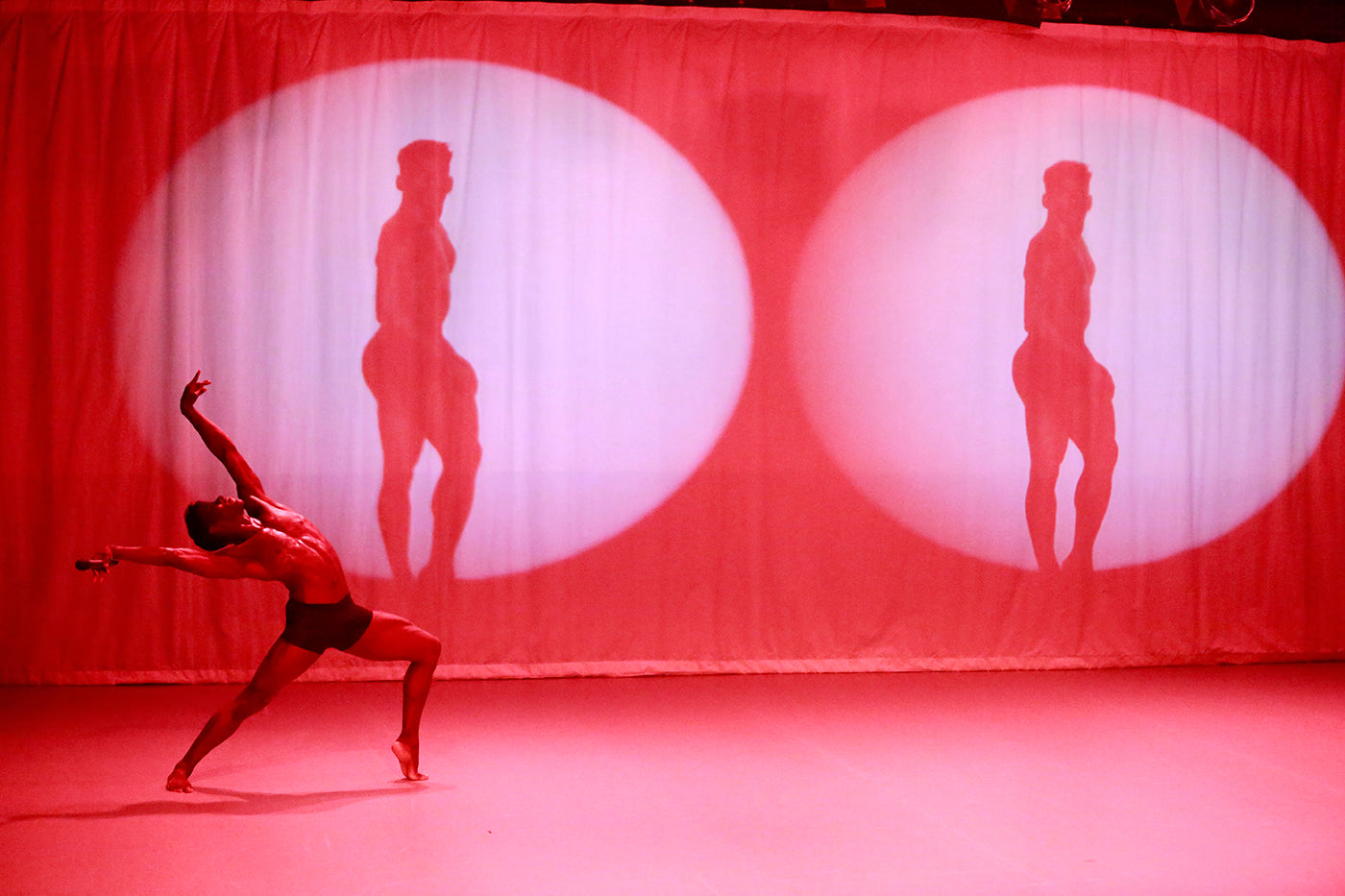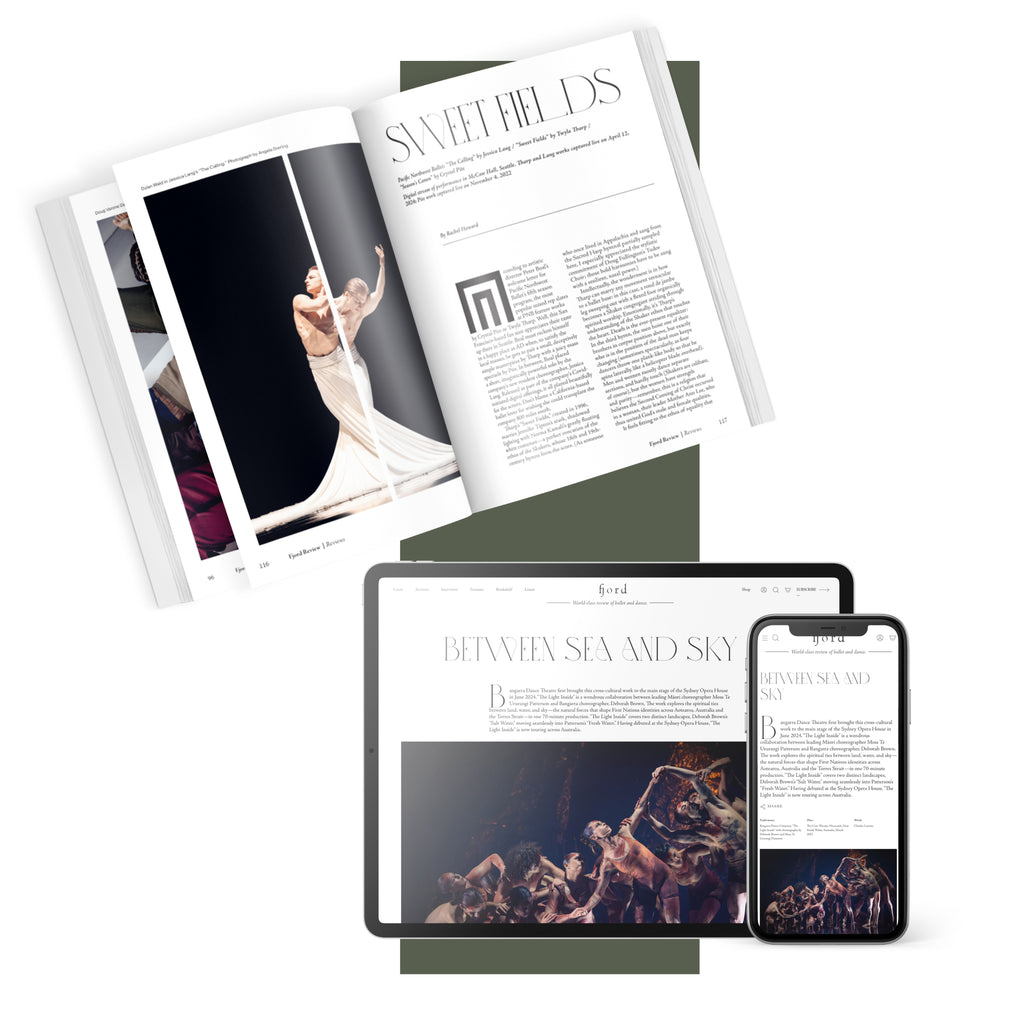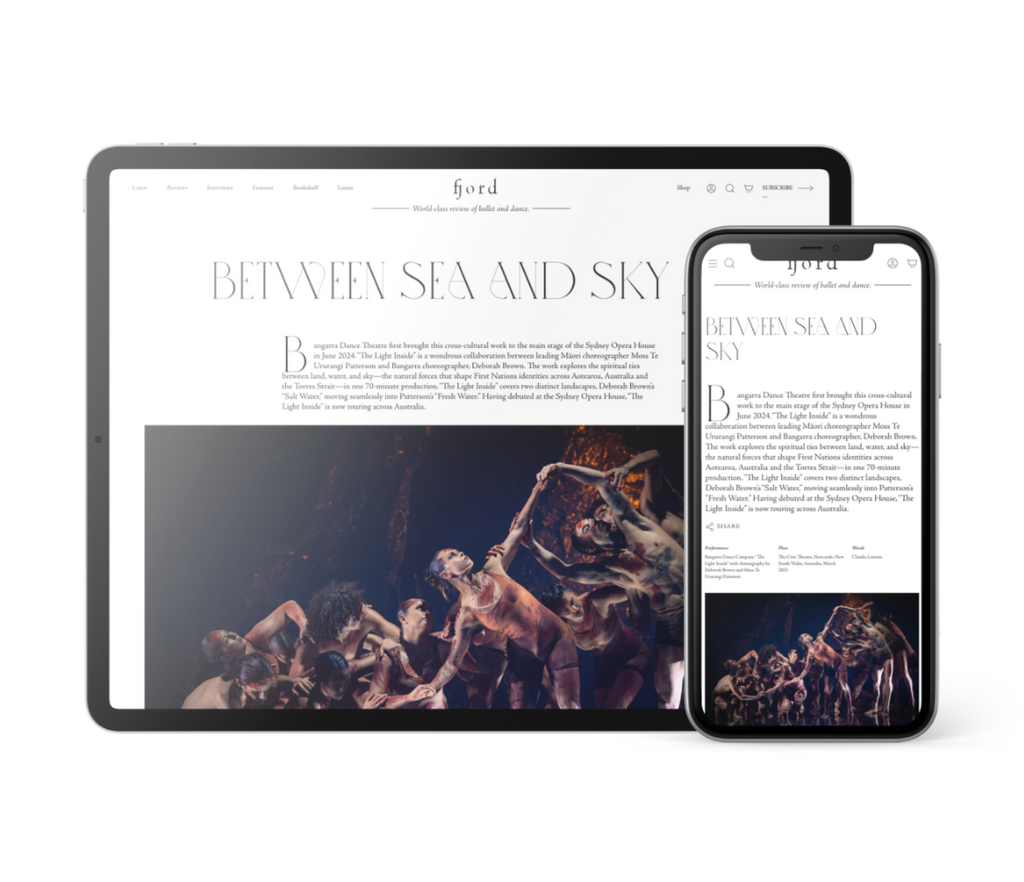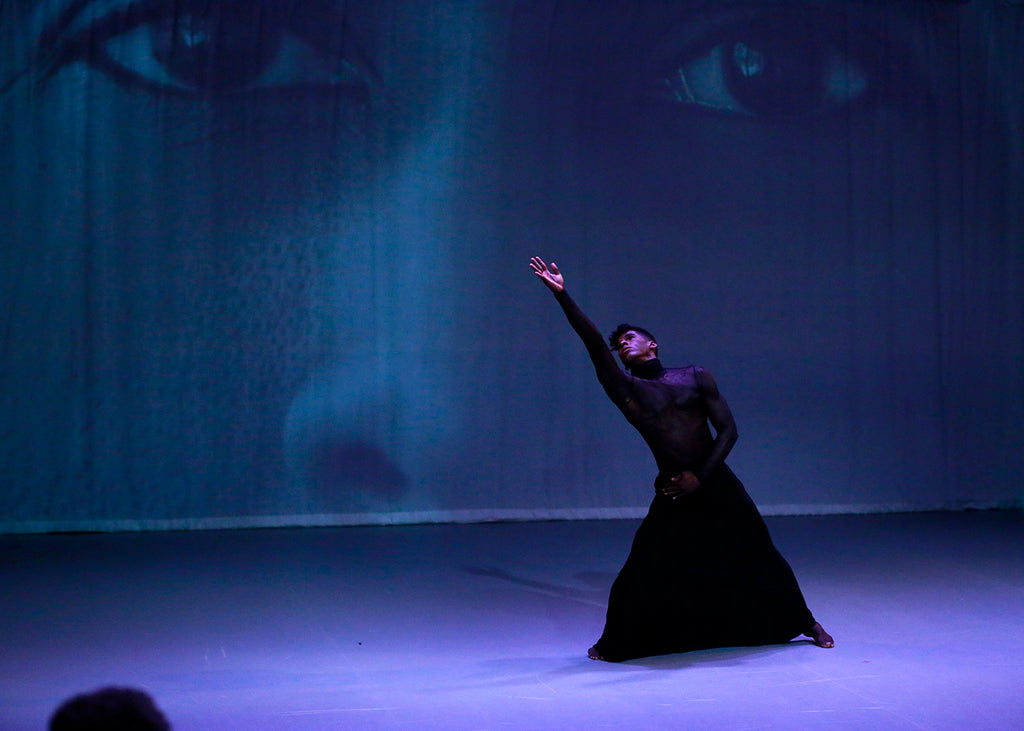The Music Within
Cleveland native Dianne McIntrye received a hometown hero's welcome during her curtain speech prior to her eponymous dance group thrilling the audience in her latest work, “In the Same Tongue.”
Continue Reading
World-class review of ballet and dance.
Lloyd Knight, Principal Dancer entering his 20th season with the Martha Graham Dance Company, debuts his first one-man show as part of Works & Process at the Guggenheim on January 13th. His original piece, “The Drama,” was created by Knight with director and choreographer Jack Ferver and filmmaker Jeremy Jacob. A multi-media autobiographical work, “The Drama” uses dance, film, music, and monologue to reflect on Knight's life as an artist while highlighting the two women who have influenced him the most: his mother and Martha Graham.
Fjord Review spoke with Knight over Zoom to discuss this first solo venture, his relationship with his mother, Martha Graham, and his insights into the challenges and rewards of a dancer's life.



“Uncommonly intelligent, substantial coverage.”
Your weekly source for world-class dance reviews, interviews, articles, and more.
Already a paid subscriber? Login

Cleveland native Dianne McIntrye received a hometown hero's welcome during her curtain speech prior to her eponymous dance group thrilling the audience in her latest work, “In the Same Tongue.”
Continue ReadingA man, much to his wife’s chagrin, has a nasty little habit: at night, he turns into a bat and flies out of their marital bed to partake in all kinds of infidelities.
Continue ReadingThe Japan Society continued its Yukio Mishima Centennial Series with a newly commissioned dance work titled “The Seven Bridges (Hashi-zukushi)” based on Yukio Mishima’s short story by that name originally published in 1956.
Continue ReadingLondon is a changed city this week. The cold front has come, and daylight hours have plummeted. The city is rammed with tourists, buskers, and shoppers.
Continue Reading
comments